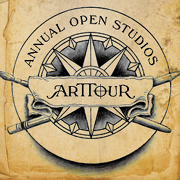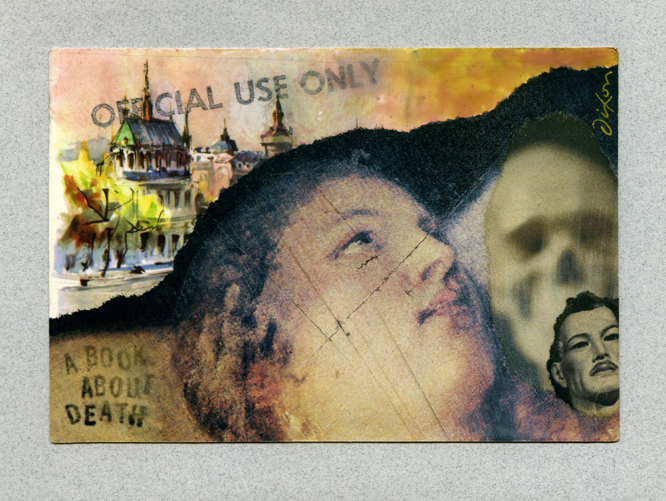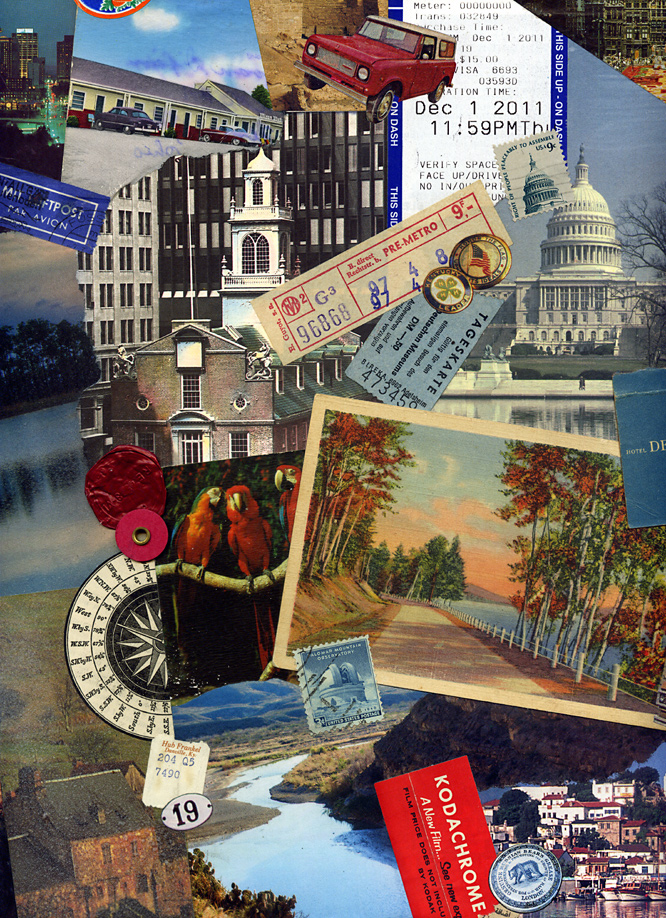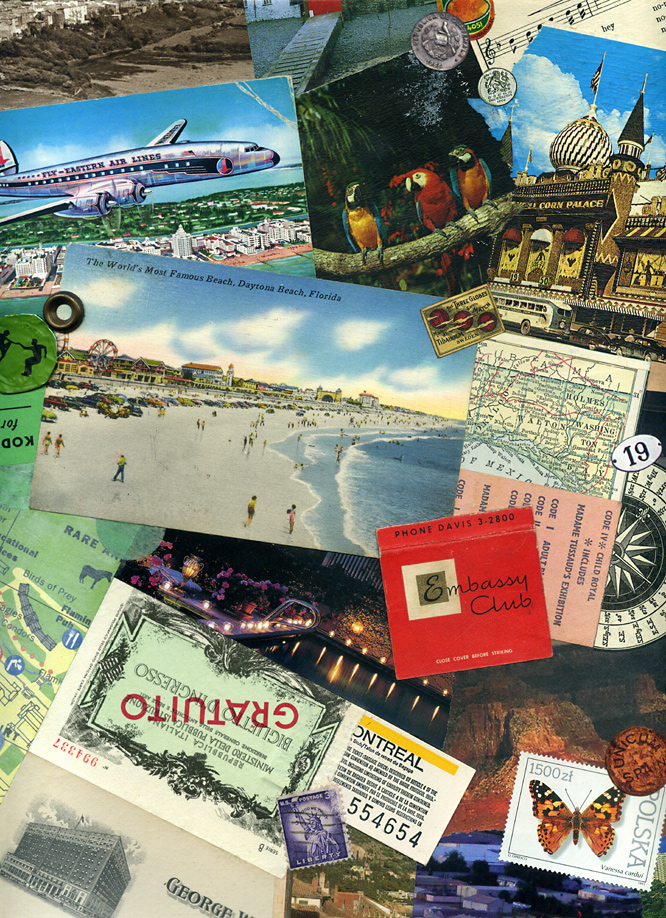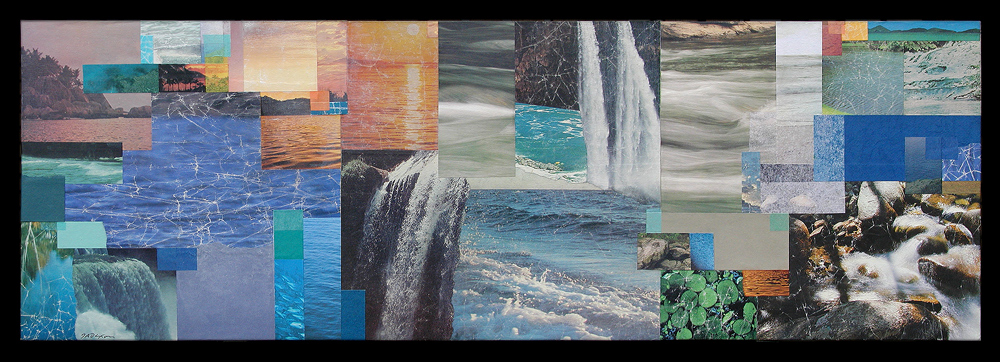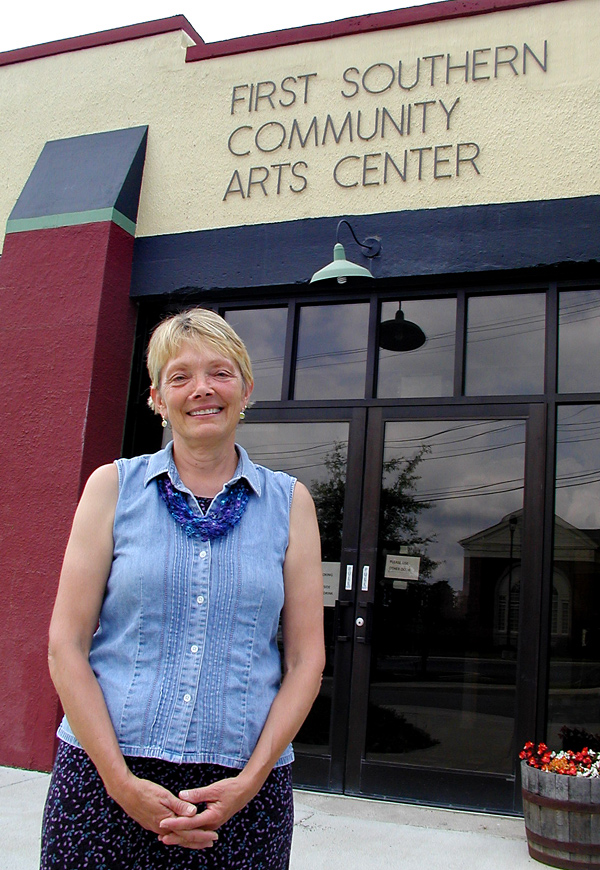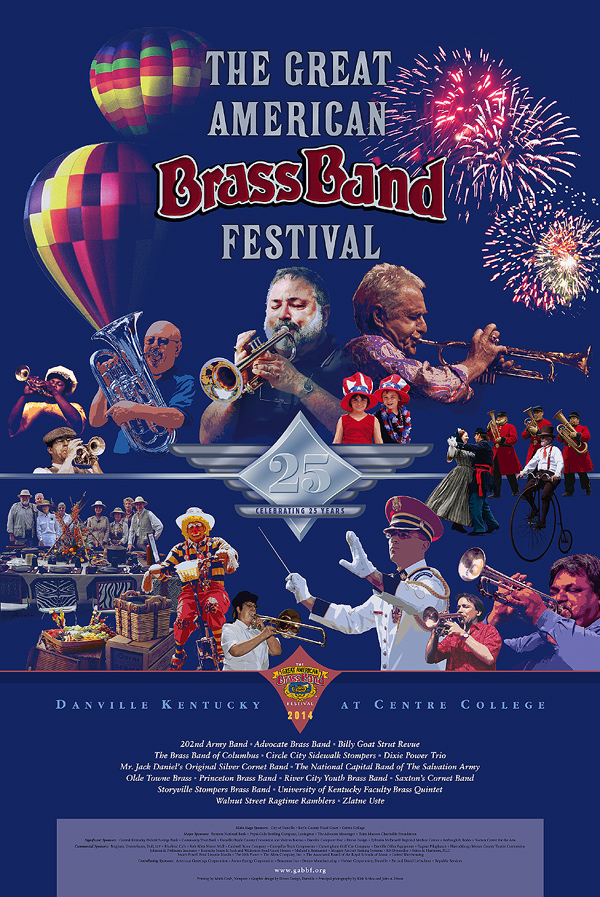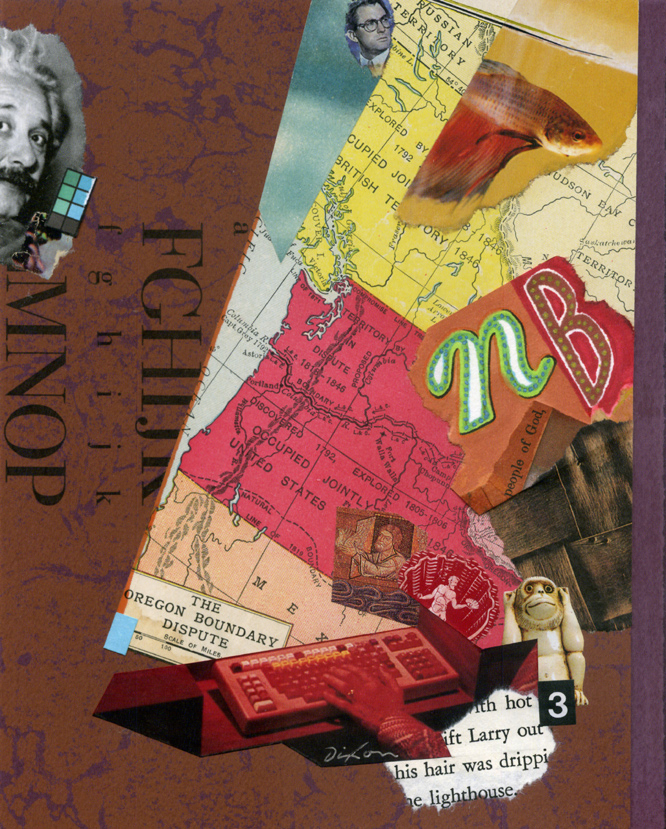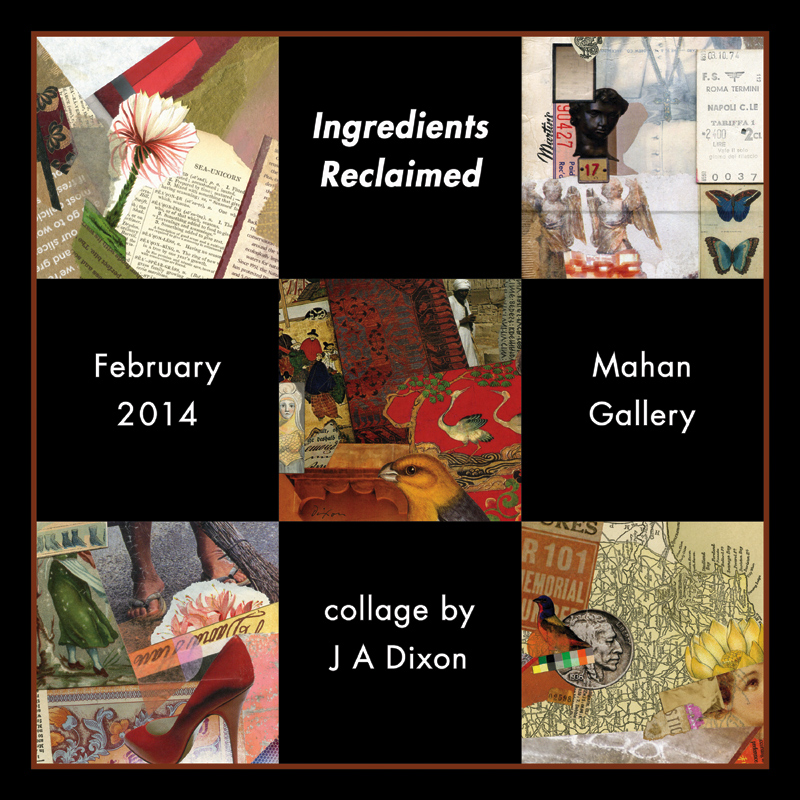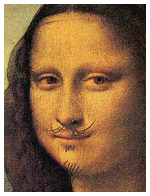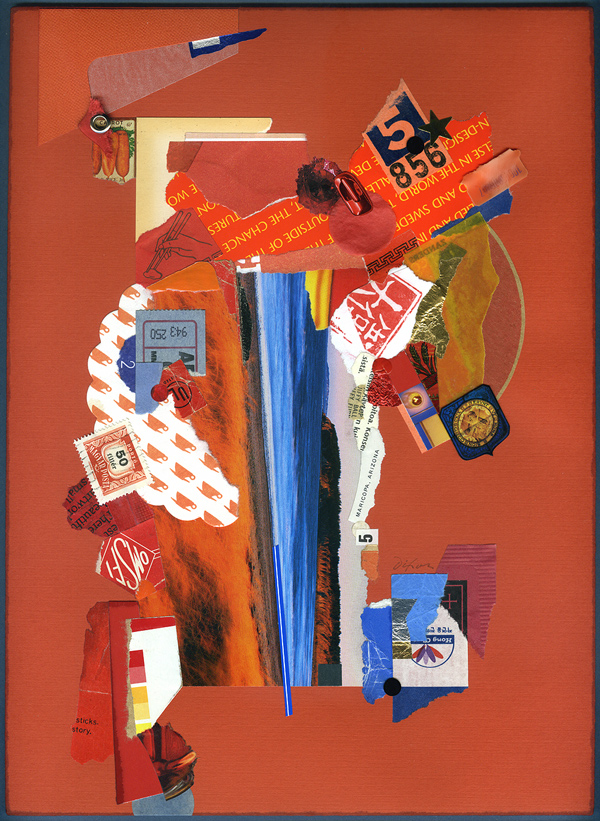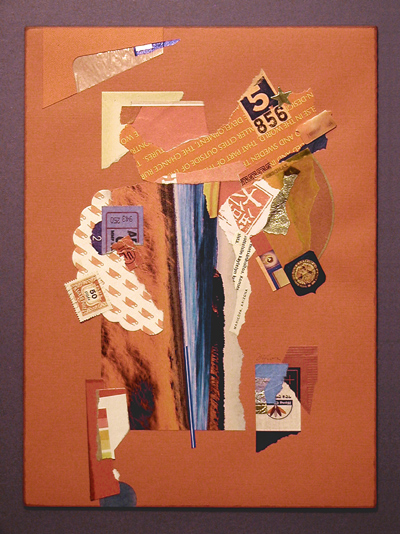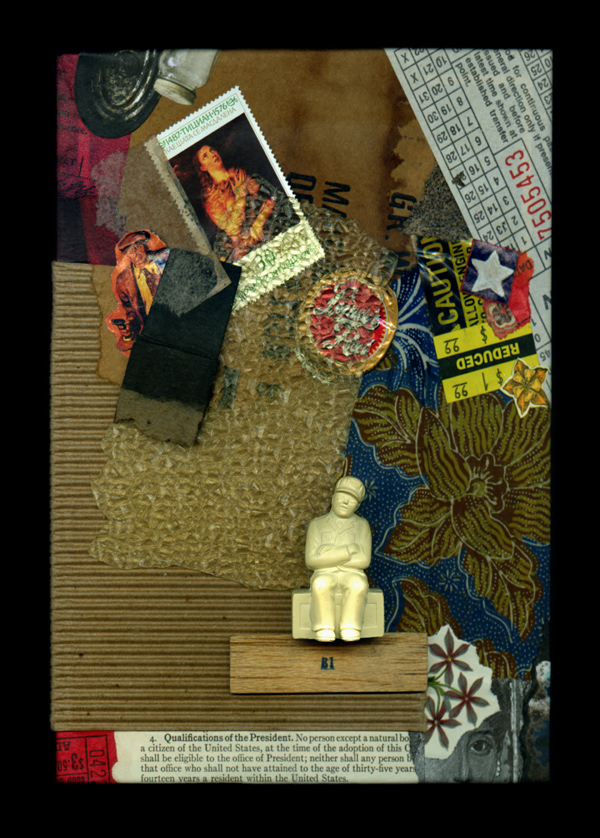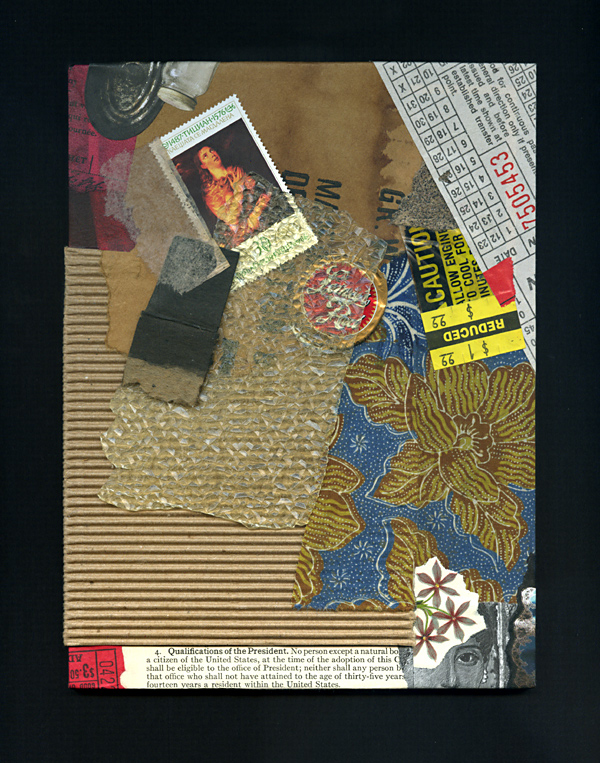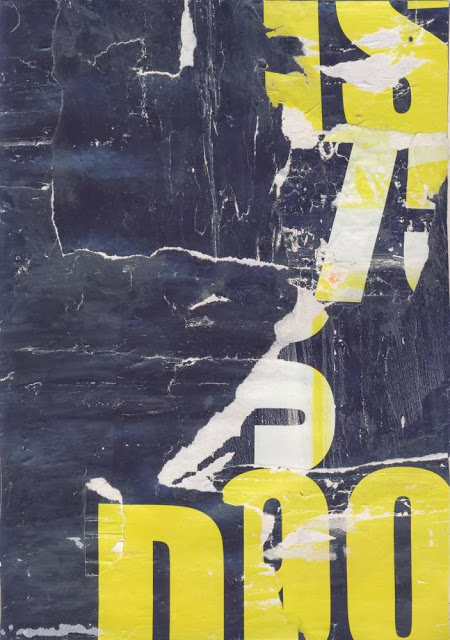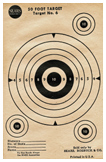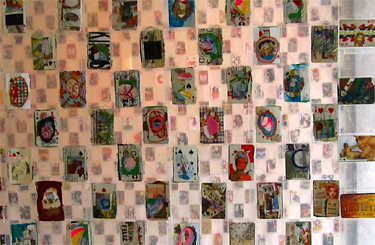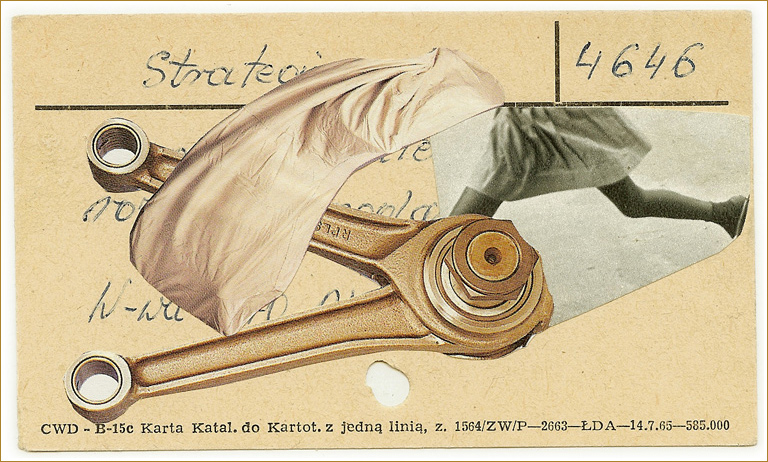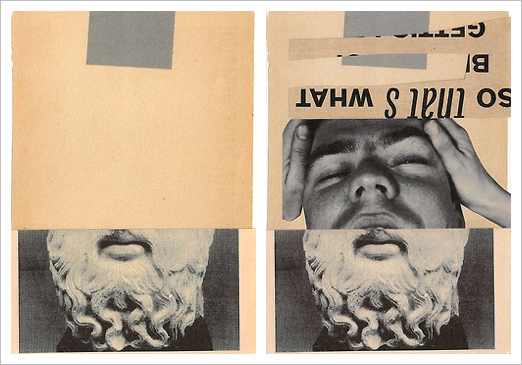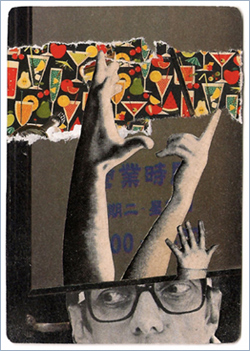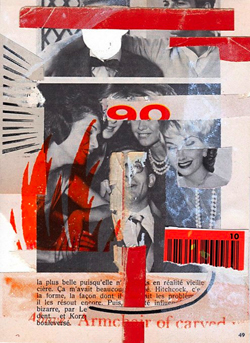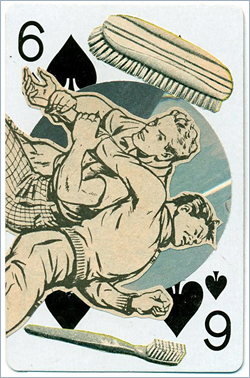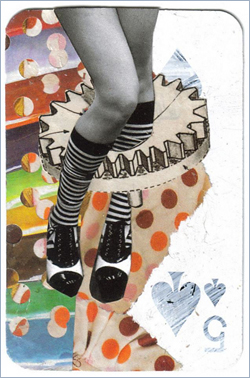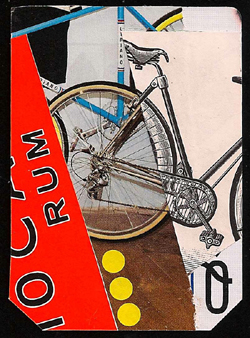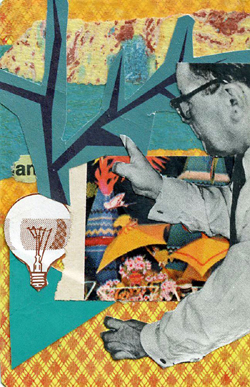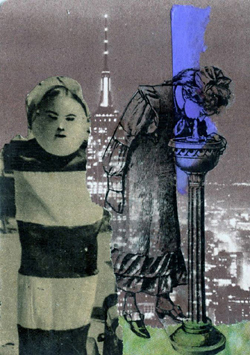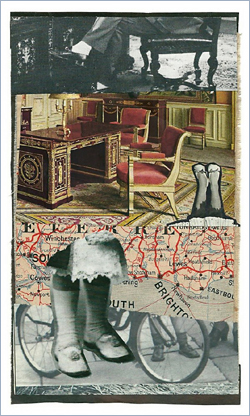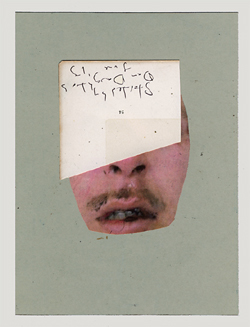“Curiosity about the unknown has no boundaries. Symbols, images, place and cultures merge. Time slips away. The stars, the cards, the mystic vigil may hold the answers. By shifting the point of view an inner spirit is released. Free to create.”
— Betye Saar
Cosmosaic was the word I chose in 1998 for a collage series that marked my first efforts at bringing to larger artworks what I had learned from creating numerous miniatures. They were intended as gifts for loved ones, with each focusing on the unique soul of the intended recipient. After completing fourteen of them over a seven-year span, I produced another in 2006 to exhibit with The Society of Layerists in Multi–Media. It relied on a more time-intensive technique than prior Cosmosaics, was more deliberate in conceptual development, was meant for no specific individual, and was more overtly metaphysical than any collage artwork I had done previously. As far as I was concerned, it was clearly a Cosmosaic, but it also stood apart from the series pattern and subsequently made the rounds of various exhibitions between periods of storage until we expanded our gallery space last year. Just as I had settled into the idea that this piece might always reside at my studio, it found a buyer this past weekend during the Open Studios ARTTOUR.
After looking through some old promotional notes, I was a bit surprised to discover the degree to which I had described the piece in spiritual terms:
“The largest composition in an eight-year series, this most recent ‘Cosmosaic’ represents my intensified concern with symmetry, proportion, and balance, both thematically and aesthetically. A spontaneous blending of found material — symbolic images, familiar icons, and mundane fragments — it shapes an interpretation of ‘the moving stream of life.’ The visual approach reinforces my sense of a profound interconnectedness, with eternal access to atonement, forgiveness, illumination, opportunity for soul attainment, and individual freedom through the Universal Christ.”
Fifteenth Cosmosaic
mixed-media collage by J A Dixon
17 x 21 inches
• S O L D

